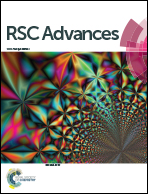Enhanced biohydrogen production from beverage wastewater: process performance during various hydraulic retention times and their microbial insights
Abstract
This study demonstrates the feasibility of continuous hydrogen production from beverage industrial wastewater (BW) in a continuously-stirred tank reactor (CSTR) using enriched mixed microflora (EMC) under mesophilic conditions. Various hydraulic retention times (HRT) (ranging from 6 to 1.5 h with an influent substrate concentration of 20 g Lhexose equivalent−1) have been evaluated to elucidate the peak hydrogen production rate (HPR) and operational stability of the bioreactor. The results show that a peak HPR of 37.5 L H2 per L per day was observed at HRT 1.5 h. In contrast, a maximum hydrogen yield (HY) of 1.62 mol H2 per mol hexose was attained at HRT 6 h. This HPR value was higher than those found using other organic wastewater sources reported in the literature. The major soluble metabolic products formed were butyric, lactic and acetic acid. The microbial community composition characterized using PCR-DGGE analysis revealed that Clostridium sp. was the dominant species. HRT-dependent trends influenced the HPR and HY. A peak energy production rate of 441 kJ L−1 d−1 was achieved at the lowest HRT (1.5 h) evaluated.


 Please wait while we load your content...
Please wait while we load your content...